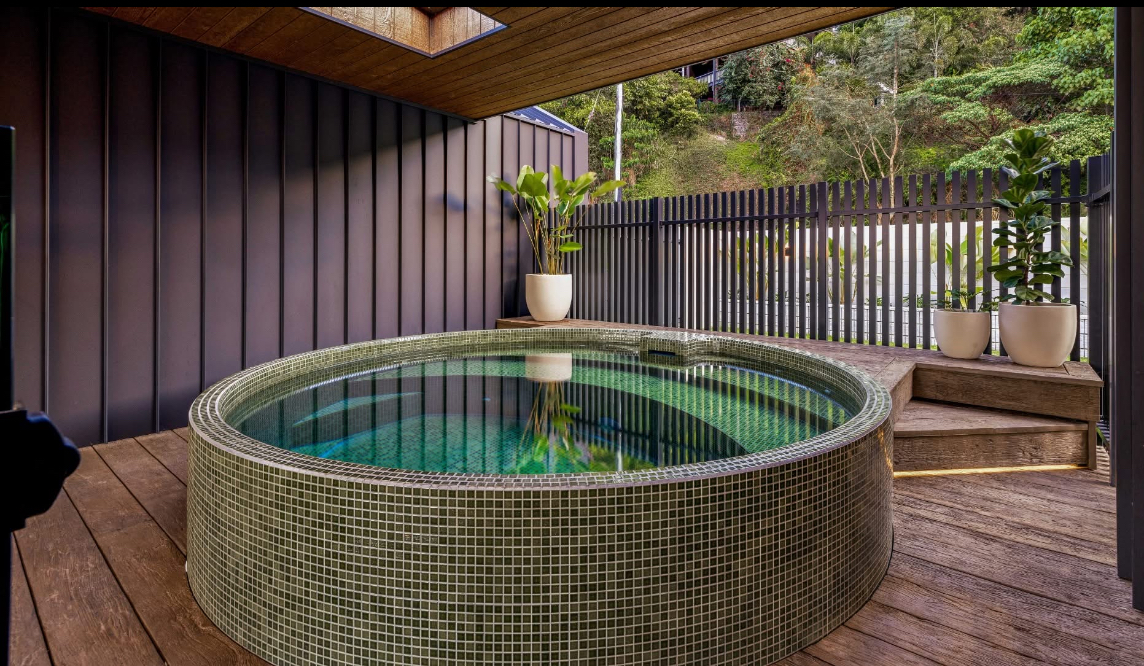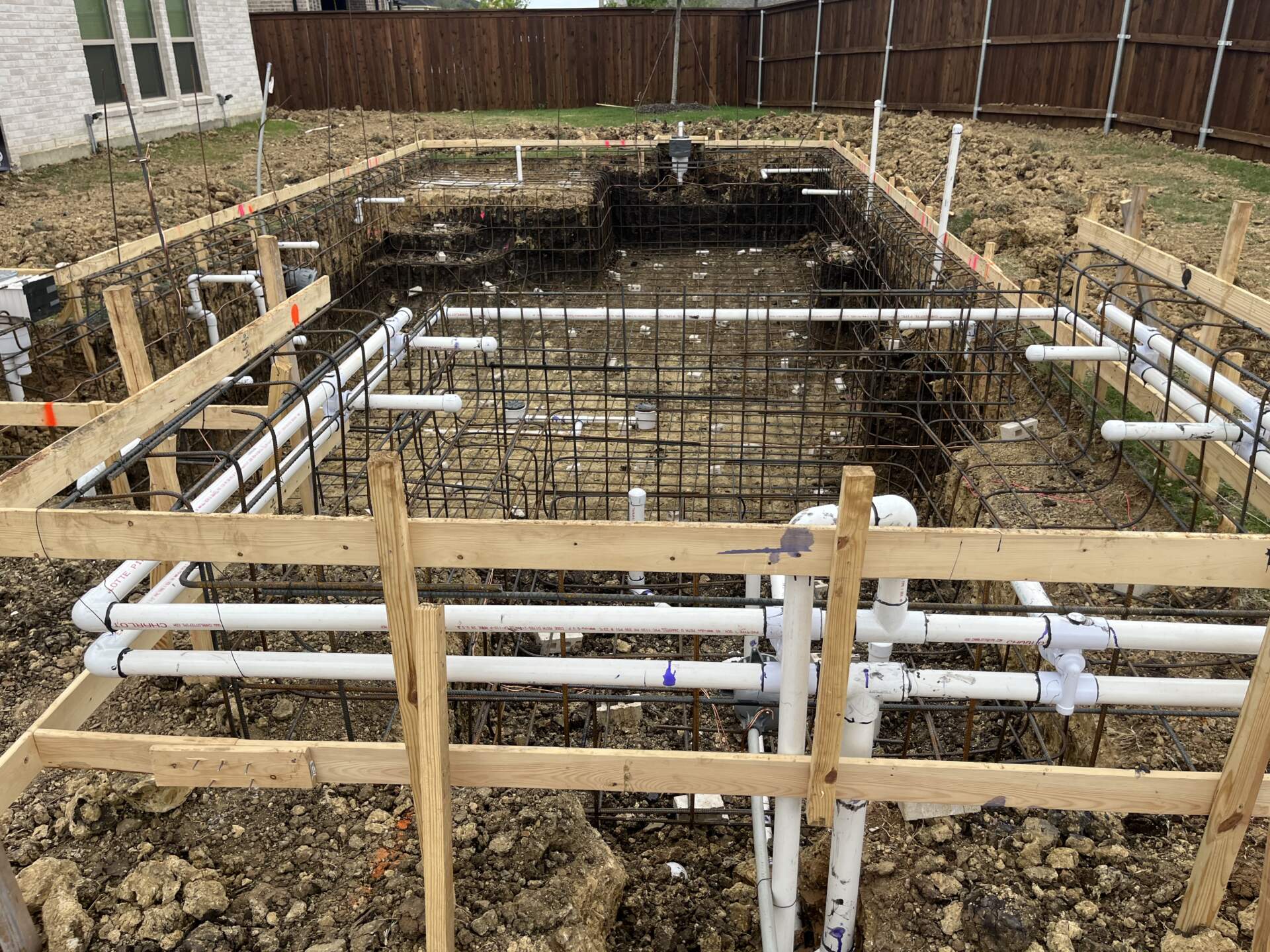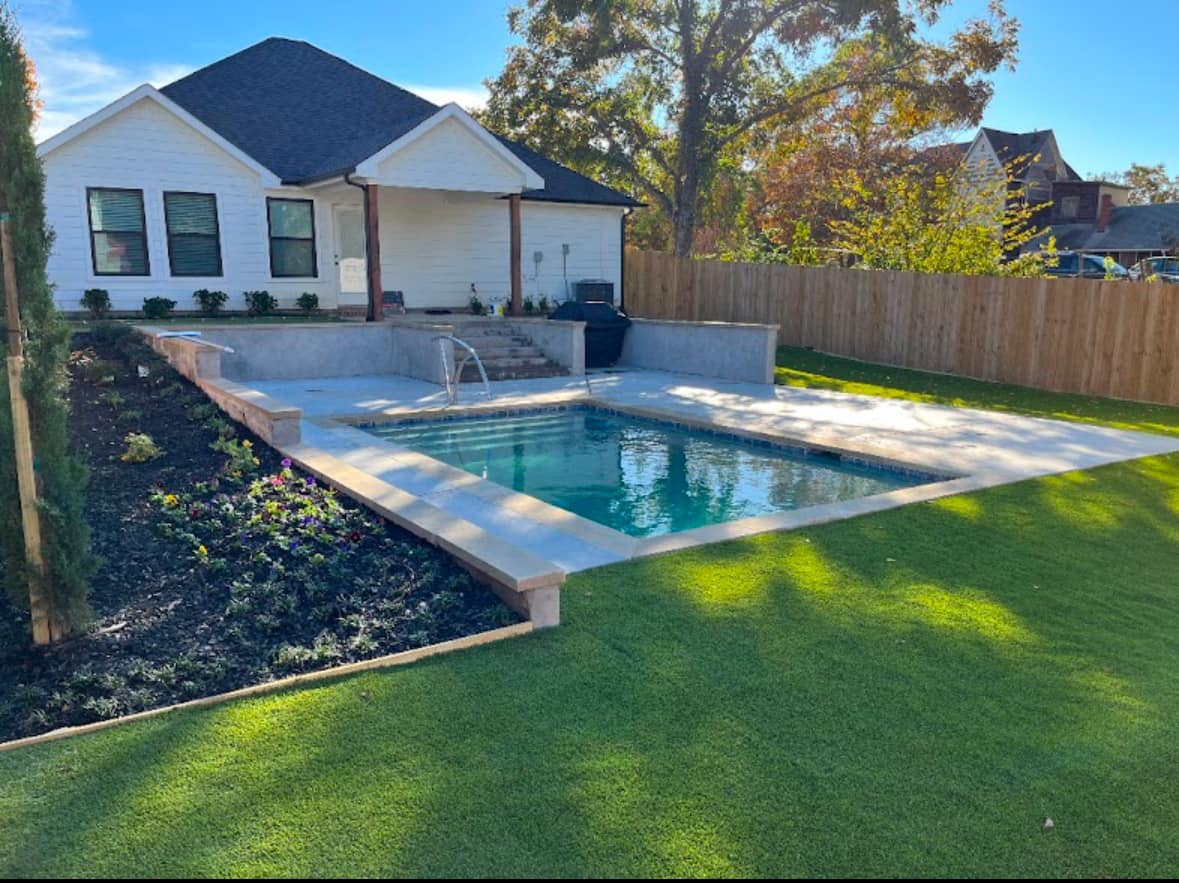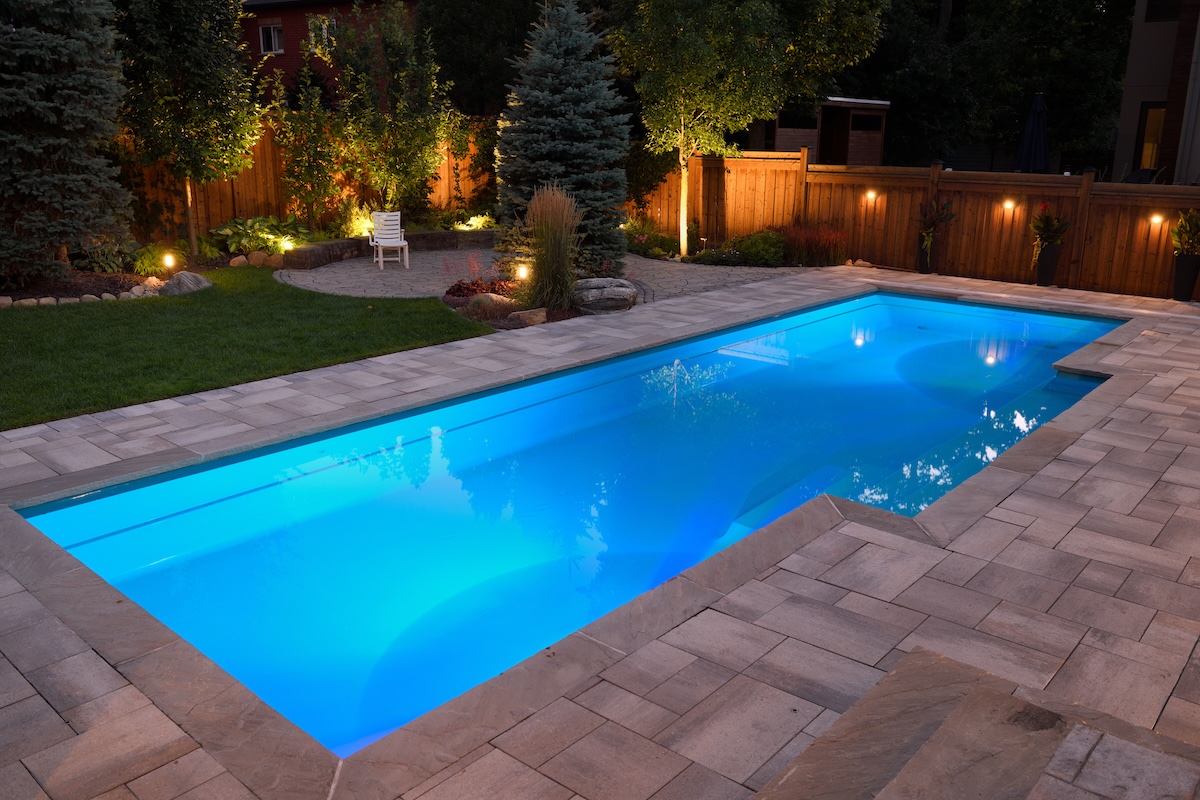Above ground pools have made a notable comeback in American backyards—not as purely budget-driven choices, but as practical alternatives for homeowners seeking quicker installation and fewer logistical hurdles. While above ground pools have improved over the years, there’s no substitute for the beauty, durability, and long-term value of professionally installed in-ground pools. In-ground pool designs aren’t just backyard additions—they’re permanent outdoor living upgrades that transform a space and elevate how a property looks, functions, and feels.
Yes, above ground pools offer a more affordable path to water in the backyard. But they’re still a compromise—limited in shape, depth, and integration. In-ground pools, on the other hand, offer full customization, better materials, and seamless landscape integration. For homeowners in Fort Worth and across North Texas, where soil conditions and seasonal extremes demand structural stability, an in-ground pool isn’t just the premium choice—generally, it’s the right one. Let’s compare both types.
Above Ground Pools
Above ground pools are available in a wide range of designs that vary by shape, size, construction material, and assembly method. While the basic round shape remains common, more homeowners are opting for oval or rectangular setups to accommodate lap swimming, multi-person use, or tighter property dimensions.
Frame Construction Options
The structural integrity of the pool relies on its frame. Choices typically include:
- Steel Frames
These offer rigid strength and long-term durability when properly maintained. Galvanized steel is treated for corrosion resistance but still requires regular upkeep in humid or chlorinated conditions. - Resin Frames
Made from high-density, UV-resistant materials, resin frames are ideal for climates prone to rust. They reduce maintenance demands and eliminate metal-on-metal wear points. - Hybrid Frames
Combining resin and steel, these frames maximize both strength and resistance. Most high-end above ground systems rely on hybrid architecture to provide extended lifespan and ease of installation.
Each frame type is paired with a matching set of rails, supports, and fasteners. Product choice should be based on environmental conditions, expected usage, and available budget.
Wall & Liner Considerations
The pool wall is typically composed of a rolled sheet of corrugated metal or aluminum, which is locked into a circular or oval track. It provides the structure necessary to contain the water, which can exceed 20,000 pounds in large models.
The liner serves as the waterproof barrier. Common types include:
- Overlap Liners
Folded over the pool wall and secured with coping strips. These are easier to replace but require careful alignment. - Beaded Liners
Snap into a track along the top rail. They offer a cleaner appearance and are easier to stretch evenly during installation. - Uni-Bead Liners
Adaptable to either style, providing flexibility if liner replacement is anticipated.
Thicker liners provide better resistance to UV rays and abrasion from swimmers or cleaning equipment. Most quality liners range between 20 and 30 mil in thickness and should be replaced every five to seven years under normal use.
Site Preparation & Groundwork
A well-prepared site is essential to the stability and safety of the pool. Poor groundwork leads to misalignment, uneven pressure, and premature wear. The location must be level to within one inch of total variance across the pool’s footprint.
Key considerations include:
- Access to sunlight
- Proximity to utilities
- Clearance from trees or overhanging structures
- Local setbacks and permit requirements
- Drainage and erosion control
Once the location is chosen, the ground is leveled and compacted. In most cases, high spots are removed rather than filling low areas to avoid settling. A base layer of sand or foam is then installed for cushioning. In some installations, a geotextile barrier is added beneath the base to prevent weed growth and root penetration.
Perimeter support blocks or concrete pavers may be used beneath each upright to distribute weight and prevent sinking, especially in clay-rich or sandy soils.
Installation Sequence
Though above ground pools are often marketed as DIY projects, most full-size installations benefit from professional handling due to the complexity of leveling, wall alignment, and mechanical setup.
The general sequence includes:
- Track and Bottom Plate Assembly
Forms the base into which the wall is inserted. This must be precisely level and circular or elliptical, depending on shape. - Wall Installation
The rolled metal wall is carefully uncoiled into the track and joined at its seam. Temporary bracing may be used until the pool is filled. - Upright and Top Rail Assembly
Structural posts and top rails are secured around the perimeter to give the wall lateral strength. - Liner Placement and Water Fill
The liner is positioned, and water is added slowly while the liner is smoothed. Wrinkles must be removed early to prevent stress points. - Plumbing and Electrical Connections
The skimmer, return line, pump, and filtration system are installed. Grounding and bonding are required by code and should be performed by a licensed electrician. - Final Trimming and Safety Checks
Rail caps, ladders, and accessories are added. The entire system is inspected for leaks, voltage faults, and liner alignment.
Weather should be mild during installation. High wind can compromise wall stability before water is added, and cold temperatures can make the liner brittle.

Decking, Safety, and Landscape Integration
A properly installed pool still needs to fit into the broader design of the backyard. Surrounding features contribute to safety, comfort, and the appearance of the space as a whole.
Deck Design
Some homeowners choose to add a pool deck to improve accessibility and create usable space around the pool, similar to how decking can be added to Plungie pools. If you want to add decking around a pool, common construction materials include:
- Pressure-treated lumber
- Composite planks
- Poured concrete platforms
- Stone or paver walkways
Decks must be built to code with secure handrails, slip-resistant surfaces, and proper clearances around the skimmer and return fittings.
Safety
Depending on jurisdiction, fencing may be required. This can include:
- Removable mesh barriers
- Self-closing gates
- Lockable ladders
In Fort Worth and similar municipalities, fencing height and latch placement must meet state residential pool safety codes.
Landscape Additions
To visually anchor the pool and create a polished appearance, many homeowners incorporate landscaping such as:
- Privacy hedges or ornamental grasses
- Gravel edging or mulch beds
- Potted plants or built-in planters
- Low-voltage lighting
These elements soften the look of a freestanding structure and turn a utilitarian feature into an inviting destination.
Maintenance Schedule and Long-Term Upkeep
Routine care preserves the life of the pool and keeps the water safe for swimmers. Most owners follow a weekly or biweekly schedule that includes:
- Skimming leaves and debris
- Brushing interior surfaces
- Testing pH, chlorine, and stabilizer levels
- Vacuuming settled debris
- Cleaning filters and baskets
Seasonal tasks such as shock treatments, partial water changes, and equipment inspections are also critical. In colder regions, winterization involves lowering the water line, sealing inlets, and covering the structure.
Even in mild climates, above ground pools should be drained and inspected every few seasons to assess liner condition and check for hidden corrosion or frame shifting.
In-Ground Pools
While above ground pools offer flexibility and quick turnaround, in-ground pools remain the benchmark for custom, high-end backyard design. Built for permanence and personalized to each site, they represent a more complex—but highly rewarding—approach to outdoor living.

In-ground pool construction begins well before excavation. Homeowners work with designers or contractors to determine shape, depth, material, features, and placement relative to the home and landscape. From initial permitting to final inspection, a full build can take time, depending on weather, local approval timelines, and design complexity.
Pool Structure Types
In-ground pools are typically built using one of three structural methods:
Gunite (Concrete) Pools
- The most customizable option, gunite pools are sprayed-on concrete shells reinforced with rebar.
- Ideal for irregular shapes, vanishing edges, tanning ledges, and integrated spas.
- Can be finished with plaster, tile, or pebble-based surfaces.
- Require curing time and regular maintenance but offer unmatched durability.
Vinyl Liner Pools
- Use a steel or polymer frame with a vinyl liner stretched across the basin.
- Lower cost than concrete or fiberglass, with faster installation.
- Limited in shape customization, but replacement liners are relatively simple.
- Best suited for homeowners who want an in-ground pool at a lower upfront cost.
Fiberglass Pools
- Pre-formed shells lowered into a prepared excavation.
- Fastest installation (as little as 2–3 weeks including site work).
- Limited shapes and sizes, but durable and low-maintenance.
- Ideal for homeowners who want a sleek, quick-install solution with fewer long-term variables.
Excavation & Site Engineering

Unlike above ground installations, in-ground pools require significant excavation and soil engineering. In regions like Fort Worth and broader North Texas, expansive clay soils must be carefully managed to prevent long-term shifting or cracking.
Soil testing, drainage planning, and structural reinforcements (like pier systems or gravel beds) are often necessary to ensure long-term stability. Professional engineering is critical, particularly on sloped properties or near utility easements.
Plumbing, Electrical, and Automation
Modern in-ground pools go far beyond basic pumps and filters. Most systems include:
- Multi-speed or variable-speed pumps
- Sand or cartridge filtration
- Integrated heating (gas or electric)
- Saltwater or ozone sanitation systems
- Remote control and automation via mobile apps
All electrical components must comply with NEC code and local permitting, and involve licensed electricians and inspections.
Custom Features & Outdoor Integration
A major draw of in-ground construction is the ability to integrate fully with other backyard elements:
- Decking in stamped concrete, travertine, or stone
- Outdoor kitchens and built-in seating
- Waterfalls, jets, bubblers, or laminar lights
- Spas, sun shelves, and tanning ledges
- Safety covers and automatic pool covers
Landscaping, lighting, and fencing are typically designed to enhance the pool as a permanent centerpiece, not just a seasonal feature.
Cost & Value
In-ground pools represent a higher upfront investment depending on materials and features. However, they can also contribute much more significantly to long-term property value, lifestyle enhancement, and customizability.

Unlike above ground pools, which are semi-permanent and often removed or replaced after 10–15 years, a well-built in-ground pool can last for decades with proper upkeep.
For Fort Worth homeowners looking for a true lifestyle upgrade—not just a way to cool off—in-ground pool construction offers unmatched design freedom, aesthetic integration, and long-term return. It’s a more complex path, but one that delivers enduring results.
Elevating Your Outdoor Space
An in-ground pool isn’t just a summer luxury. It’s a permanent addition that shapes how Texan families gather, relax, and make use of their property. With today’s materials and technologies, these pools offer lasting beauty, functional versatility, and a level of quality that meets modern expectations.

For Fort Worth homeowners ready to improve their outdoor lifestyle without sacrificing time, budget, or yard integrity, above ground pool construction delivers on all fronts.
To begin planning your in ground pool construction with a team that knows how to bring backyard visions to life, contact Aquaworkz Pool Co. and take the first step toward building your private oasis.

